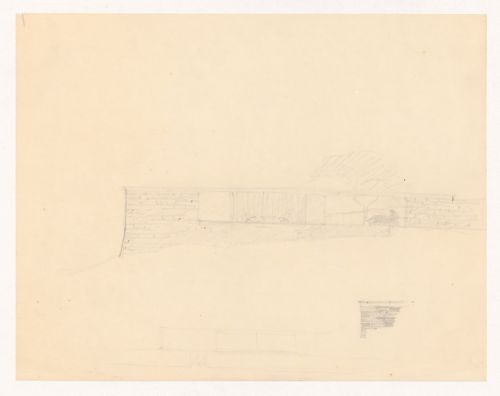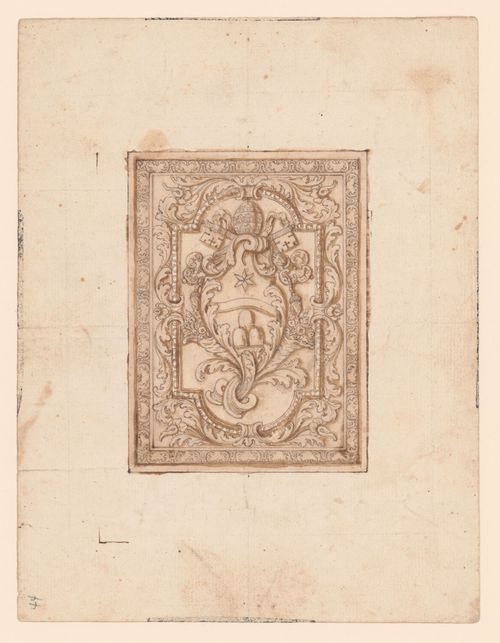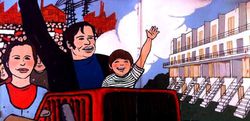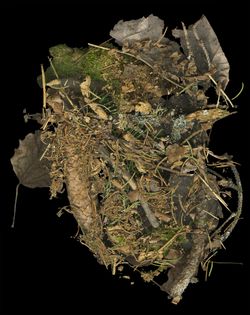ARCH400368
Description:
Storyboard with filming instructions, techniques, and durations for various scenes – including the juxtaposition of the grid over the landscape and the arrival of humans within the Supersurface – as well as a technical note about interchange between graphic elements and live filming.
1972
Page 2 of a storyboard with filming instructions, techniques, and durations for various scenes for Supersuperficie [Supersurface]
Actions:
ARCH400368
Description:
Storyboard with filming instructions, techniques, and durations for various scenes – including the juxtaposition of the grid over the landscape and the arrival of humans within the Supersurface – as well as a technical note about interchange between graphic elements and live filming.
ARCH400369
Description:
Storyboard with filming instructions, techniques, and durations for various scenes – including the juxtaposition of the grid over the landscape and the arrival of humans within the Supersurface – as well as a technical note about interchange between graphic elements and live filming.
1972
Page 1 of a storyboard with filming instructions, techniques, and durations for various scenes for Supersuperficie [Supersurface]
Actions:
ARCH400369
Description:
Storyboard with filming instructions, techniques, and durations for various scenes – including the juxtaposition of the grid over the landscape and the arrival of humans within the Supersurface – as well as a technical note about interchange between graphic elements and live filming.
photographs
Quantity:
13 slide(s)
ARCH268386
Description:
Images of people (mostly children) with Hoberman-designed toys. Includes 1 image of Chuck Hoberman within and holding a Hoberman sphere, and 1 image of Bill and Hillary Clinton with a Hoberman sphere.
late 1990s
Images of people (mostly children) with Hoberman-designed toys
Actions:
ARCH268386
Description:
Images of people (mostly children) with Hoberman-designed toys. Includes 1 image of Chuck Hoberman within and holding a Hoberman sphere, and 1 image of Bill and Hillary Clinton with a Hoberman sphere.
photographs
Quantity:
13 slide(s)
late 1990s
articles
An Undisciplined Practice
With and Within
Leonard Streich, Julian Schubert et Elena Schütz, Something Fantastic, Francesco Garutti, With and Within, The Things Around Us, context, practice
26 July 2021
An Undisciplined Practice
Leonard Streich, Julian Schubert, and Elena Schütz of Something Fantastic in conversation with Francesco Garutti
Actions:
With and Within
drawings
Level of archival description:
Project
CI005.S1.1914.PR1
Description:
In 1914 Oud designed a combination shop and dwelling in Heemstede for upholsterer, Mr G.S. Van Bakel. The shop and dwelling shared the same entryway while the rear elevation consisted of a flat surface within a united facade. Oud had originally planned for one large window on the front facade but changed his design because the client argued that two windows were too costly (Taverne et al. 2001, 75). The project series includes drawings of both an L-shaped and a rectangular design.
1914
Shop with Dwelling (Van Bakel), Heemstede, Netherlands (1914)
Actions:
CI005.S1.1914.PR1
Description:
In 1914 Oud designed a combination shop and dwelling in Heemstede for upholsterer, Mr G.S. Van Bakel. The shop and dwelling shared the same entryway while the rear elevation consisted of a flat surface within a united facade. Oud had originally planned for one large window on the front facade but changed his design because the client argued that two windows were too costly (Taverne et al. 2001, 75). The project series includes drawings of both an L-shaped and a rectangular design.
drawings
Level of archival description:
project
1914
DR1994:0006:001
Description:
- The largest elevation shows Barcelona chairs, a table, and a sculpture within the house. The detail for the upper wall suggests that the architect planned to use an irregular stone such as field stone for the cladding, with steel for the roof coping.
architecture
1934
Sketch elevation for Mountain House with sketch for a detail for the upper wall and sketch elevation, probably for the entrance façade
Actions:
DR1994:0006:001
Description:
- The largest elevation shows Barcelona chairs, a table, and a sculpture within the house. The detail for the upper wall suggests that the architect planned to use an irregular stone such as field stone for the cladding, with steel for the roof coping.
architecture
DR1966:0001:044
Description:
- This design for a papal escutcheon is surrounded by leaves and decorative mouldings, all within a rectangular frame.
ornament
between 1730 and 1773
Plan for a ceiling design or book cover with a papal escutcheon
Actions:
DR1966:0001:044
Description:
- This design for a papal escutcheon is surrounded by leaves and decorative mouldings, all within a rectangular frame.
ornament
Evoking a provocation famously framed by Le Corbusier, “Architecture ou Révolution,” this conversation will situate the SAAL process in Portugal within international debates during the 1960s and 1970s on social housing and the architect’s social responsibility. Nuno Portas, Secretary of State for Housing and Urbanism of the government established after the 1974 Portuguese(...)
Paul-Desmarais Theatre
14 May 2015 , 6pm
Architecture or Revolution? A Conversation with Nuno Portas and Nuno Grande
Actions:
Description:
Evoking a provocation famously framed by Le Corbusier, “Architecture ou Révolution,” this conversation will situate the SAAL process in Portugal within international debates during the 1960s and 1970s on social housing and the architect’s social responsibility. Nuno Portas, Secretary of State for Housing and Urbanism of the government established after the 1974 Portuguese(...)
Paul-Desmarais Theatre
The Dark Edge of a Clear-cut
In a conversation moderated by Louise Désy, CCA Curator, Photographs, Lorraine Gilbert presents her work: The documentation of landscapes I have lived and worked in has resulted in a body of work that questions our place within nature and within our built environments. The seemingly objective nature of the way I have pictured these natural and urban spaces, has given way(...)
Main galleries Keyword(s):
The Dark Edge of a Clear-cut, Canada, It's all happening so fast, conversation
4 February 2017, 3pm
The Dark Edge of a Clear-cut
Actions:
Description:
In a conversation moderated by Louise Désy, CCA Curator, Photographs, Lorraine Gilbert presents her work: The documentation of landscapes I have lived and worked in has resulted in a body of work that questions our place within nature and within our built environments. The seemingly objective nature of the way I have pictured these natural and urban spaces, has given way(...)
Main galleries Keyword(s):
The Dark Edge of a Clear-cut, Canada, It's all happening so fast, conversation
PH1979:0508
Description:
This album depicts photographs, plans, sketches of Stonehenge and texts. Preface is signed by Sir Henry James, 29th May 1867, Southhampton. Album has appendix and List of Books inserted at the end. "Col. Sir Henry James, Director-General of the Ordnance Survey, was a strong believer that photography had to be utilized as a major tool for mapping and survey work and he employed the Royal Engineers for that purpose. Colonel James appears in several of the Stonehenge photographs published by the Ordnance Survey. [...] Stonehenge is the world's most famous, large megalithic stone circle and is usually designated as a site used for religious worship in Neolithic Britain. However, the first use of this locality for documented ritual activity goes back to the Mesolithic and the erection of several large totem poles perhaps as early as 8,000 BC (Stonehenge O). Lunar observations preceded the construction of a causeway c.3200 BC, followed by an earth circle and Heel Stones c.3100 BC (Stonehenge 1a) and the Aubrey Holes (Stonehenge 1b). The Stonehenge site was then abandoned for about 1,000 years when large bluestones quarried in Wales were brought to the site and made into the Double Bluestone Circle with Avenue. 2150 BC (Stonehenge II). Soon thereafter sarsen stones were brought in from Avebury to build the great Sarsen Circle and Trilithon Horseshoe, 2100 BC (Stonehenge IIIz). Bluestones were brought back and added as the Bluestone Circle and Bluestone Horseshoe to the sarsen monument, 1800 BC (Stonehenge IIId). The sacred avenue was extended to the River Avon, 1100 BC (Stonehenge IV), the last phase of megalithic construction at this site. Note that the great stone circle and all construction at the Stonehenge site was completed several hundred years before we can postulate Celtic druids in the vicinity. We can only mention in passing that Stonehenge was embedded within a large ritual complex, where several of the ten megalithic constructions were also monumental in scale. Integration between these structures may not have been well planned in advance, but assuredly was articulated as each was built." Neolithic Britian Online.
sculpture, topographic
1867
Plans and Photographs of Stonehenge, and of Turusachan in the Island of Lewis; with Notes Relating to the Druids and Sketches of Cromlechs in Ireland
Actions:
PH1979:0508
Description:
This album depicts photographs, plans, sketches of Stonehenge and texts. Preface is signed by Sir Henry James, 29th May 1867, Southhampton. Album has appendix and List of Books inserted at the end. "Col. Sir Henry James, Director-General of the Ordnance Survey, was a strong believer that photography had to be utilized as a major tool for mapping and survey work and he employed the Royal Engineers for that purpose. Colonel James appears in several of the Stonehenge photographs published by the Ordnance Survey. [...] Stonehenge is the world's most famous, large megalithic stone circle and is usually designated as a site used for religious worship in Neolithic Britain. However, the first use of this locality for documented ritual activity goes back to the Mesolithic and the erection of several large totem poles perhaps as early as 8,000 BC (Stonehenge O). Lunar observations preceded the construction of a causeway c.3200 BC, followed by an earth circle and Heel Stones c.3100 BC (Stonehenge 1a) and the Aubrey Holes (Stonehenge 1b). The Stonehenge site was then abandoned for about 1,000 years when large bluestones quarried in Wales were brought to the site and made into the Double Bluestone Circle with Avenue. 2150 BC (Stonehenge II). Soon thereafter sarsen stones were brought in from Avebury to build the great Sarsen Circle and Trilithon Horseshoe, 2100 BC (Stonehenge IIIz). Bluestones were brought back and added as the Bluestone Circle and Bluestone Horseshoe to the sarsen monument, 1800 BC (Stonehenge IIId). The sacred avenue was extended to the River Avon, 1100 BC (Stonehenge IV), the last phase of megalithic construction at this site. Note that the great stone circle and all construction at the Stonehenge site was completed several hundred years before we can postulate Celtic druids in the vicinity. We can only mention in passing that Stonehenge was embedded within a large ritual complex, where several of the ten megalithic constructions were also monumental in scale. Integration between these structures may not have been well planned in advance, but assuredly was articulated as each was built." Neolithic Britian Online.
1867
sculpture, topographic
![Page 2 of a storyboard with filming instructions, techniques, and durations for various scenes for Supersuperficie [Supersurface]](/img-collection/VtojAYDADHCLQoAAL19om_h6y3w=/500x665/485674.jpg)
![Page 1 of a storyboard with filming instructions, techniques, and durations for various scenes for Supersuperficie [Supersurface]](/img-collection/OwigRQBxVK9p-Y5vXPA7P-9nGPo=/500x665/485675.jpg)




